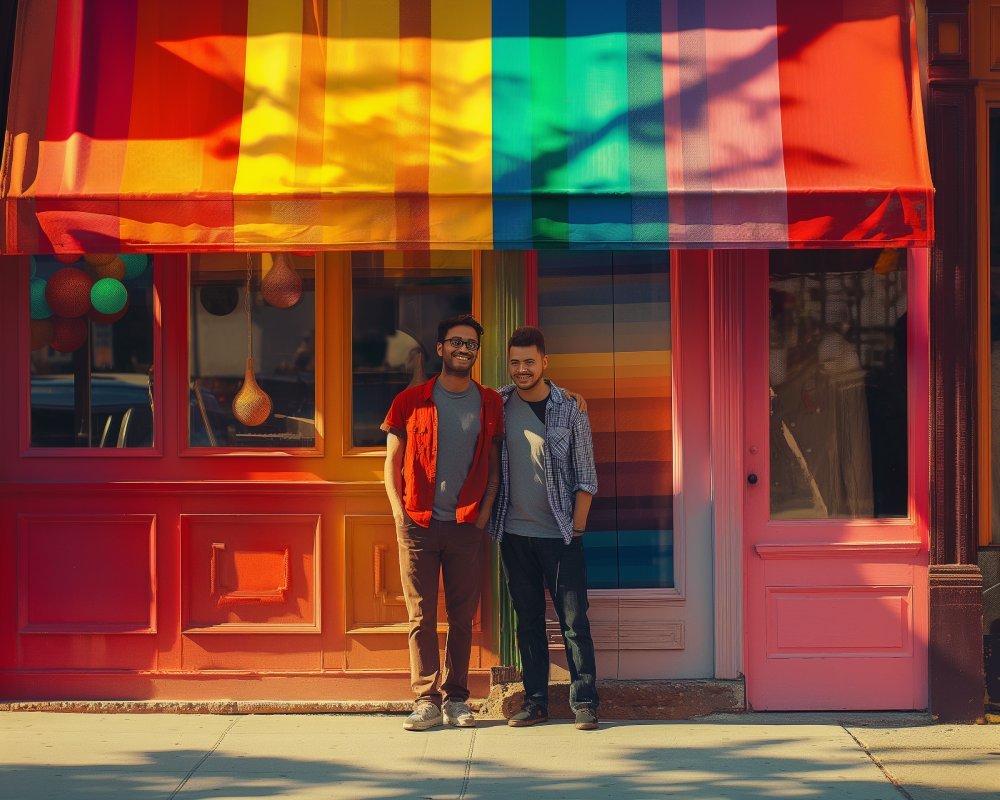
Gay Lifestyle: What Is Gay Life Like? A Comprehensive Exploration of LGBTQ Culture, Challenges, and Joys
1. Introduction – Gay Lifestyle: What Is Gay Life Like?
What Is Gay Life Like? This question encapsulates numerous facets of the LGBTQ experience—from the coming-out journey, to the joy of finding a supportive community, to the persistent challenges of prejudice. Many have heard the phrase “What is the Gay Lifestyle?” used in popular media or discussions, yet the term “lifestyle” is often misleading. Being gay isn’t a single lifestyle but rather a broad spectrum of identities, cultures, and ways of living.
In this extensive blog, we will delve into every conceivable aspect of gay life, aiming for a deep understanding of how sexual orientation influences daily experiences, relationships, mental health, and cultural engagement. We’ll also reflect on the question: How has being gay made your life more difficult? For many, the path to self-acceptance and public affirmation is marred by homophobia, alienation, or family rejection. But even amidst the difficulties, there is beauty and resilience—stories of empowerment, creative expression, and enduring bonds.
Key topics include:
- Historical context: Examining What Life Was Like for Gay Americans Before Stonewall and how hidden subcultures gradually became more visible.
- Coming of age: What it’s really like to grow up gay, including experiences in school, family, and social settings.
- Challenges and joys: Highlighting that Even at Its Best, the Gay Life Is a Hard One, but also exploring What’s Good about Being Gay?
- Cultural and social dynamics: Looking at LGBTQ Culture and Life in the U.S., the rise of gay neighborhoods, media representation, and activism.
- Practical insights: How to Be Happy as a Gay Man, focusing on mental health, self-acceptance, and forging supportive communities.
Through these themes, we aim to provide a holistic picture. While we focus primarily on experiences within the United States, we’ll also consider global perspectives and the ongoing shifts in social attitudes. Ultimately, understanding gay life isn’t about pinpointing a single “lifestyle,” but rather appreciating the myriad variations of what it means to be LGBTQ in a complex, ever-evolving world.

2. Historical Context: What Life Was Like for Gay Americans Before Stonewall
To grasp what the gay life is like today, we must step back in time to explore the historical context. Before the Stonewall Riots of 1969, LGBTQ individuals in the U.S. lived in a society where same-sex attraction was largely criminalized or pathologized. This section will explore those decades leading up to Stonewall, illustrating how clandestine identities and hidden bars paved the way for the modern gay rights movement.
2.1. Criminalization and Secrecy
- Sodomy Laws: Well into the mid-20th century, sodomy laws existed in many states, making same-sex acts a criminal offense. People risked imprisonment, fines, or public humiliation.
- Mental Health Stigma: Until 1973, the American Psychiatric Association classified homosexuality as a mental disorder, fueling oppressive “therapies” like conversion practices.
2.2. Underground Subcultures
Despite repressive legal frameworks, gay men and lesbians formed covert networks. Bars with no signs, coded language, and discreet gatherings allowed LGBTQ individuals to meet. The 1950s and early 1960s saw the rise of “gay enclaves” in cities like New York, San Francisco, and Chicago, though constant police raids threatened these spaces.
2.3. The McCarthy Era and the Lavender Scare
During the 1950s Red Scare, government institutions purged homosexual employees, claiming they were security risks. Thousands lost their jobs or lived in fear of exposure. This “Lavender Scare” underscored the hostility facing gay Americans in everyday life.
2.4. Emerging Activism
Groups like the Mattachine Society (founded in 1950) and the Daughters of Bilitis (1955) advocated quietly for gay rights, focusing on assimilation and modest reforms. They organized pickets, wrote newsletters, and slowly chipped away at public misconceptions. Although overshadowed by broader civil rights movements, these early gay organizations laid crucial groundwork.
2.5. Tensions Mounting: Prelude to Stonewall
By the late 1960s, a new generation of LGBTQ youth felt emboldened to demand open acceptance. The Stonewall Riots in June 1969 erupted in response to police harassment at New York’s Stonewall Inn, igniting a more radical, vocal wave of activism. This pivot from cautious petitioning to vocal protests marked a turning point, setting the stage for Pride parades and the concept of “coming out” as acts of defiance and self-affirmation.
Why It Matters: Understanding “What Life Was Like for Gay Americans Before Stonewall” reminds us that the freedoms and acceptance many enjoy today grew from a history of struggle and secrecy. People risked everything—reputation, livelihood, freedom—just to express themselves. This legacy informs contemporary discussions about gay life, underscoring the resilience of a community that transformed marginalization into a catalyst for social change.
Advertisement · Scroll to continue
Recommended
3. Understanding Sexual Orientation and Homosexuality
Before tackling the complexities of gay lifestyle or daily experiences, it’s crucial to clarify what sexual orientation is and how homosexuality fits into broader human diversity. Myths abound about same-sex attraction, so let’s address the basics.

3.1. Defining Sexual Orientation
Sexual orientation refers to a person’s enduring pattern of emotional, romantic, and/or sexual attractions. Common orientations include heterosexual (attracted to the opposite sex), homosexual (attracted to the same sex), bisexual (attracted to both sexes), and asexual (little or no sexual attraction). Homosexuality specifically denotes same-sex attraction—encompassing gay men and lesbian women.
3.2. Biological, Psychological, and Social Dimensions
- Biological Influences: Researchers have explored genetic, hormonal, and neurological correlates of sexual orientation. Although there’s no single “gay gene,” evidence suggests a complex interplay of biological factors.
- Psychological Well-Being: Homosexuality was once deemed a mental disorder, but overwhelming scientific consensus now sees it as a normal variant of human sexuality.
- Social Construction: Cultural norms shape how we label and interpret sexual orientation. Some societies historically embraced same-sex relationships, while others stigmatized them.
3.3. The Concept of “Lifestyle”
People often speak of a “gay lifestyle,” implying a singular way of living for gay men or lesbians. In reality, sexual orientation doesn’t dictate every aspect of a person’s life. Gay folks span all professions, backgrounds, religions, and worldviews. The idea that there’s a monolithic “lifestyle” often arises from stereotypes—e.g., partying in gay clubs, being fashion-conscious, or lacking stable relationships. While some may fit such cliches, others lead suburban family lives, run farms, or quietly practice their faith, showcasing the vast diversity within the LGBTQ community.
3.4. Coming to Terms with Sexual Orientation
For many, recognizing one’s attraction to the same sex sparks a process of introspection, sometimes confusion or denial, then self-acceptance (or internalized homophobia, if acceptance is lacking). Societal attitudes shape how easy or difficult this journey is. In supportive environments, individuals can integrate their orientation confidently. In oppressive contexts, shame or secrecy might dominate.
3.5. Homosexuality vs. Being Gay
While “homosexuality” is a clinical term describing same-sex attraction, “gay” and “lesbian” emerged as identity labels, emphasizing community and self-affirmation. Using “gay” can feel more personal, underscoring that orientation is part of one’s identity, not merely a sexual act. This shift in language marks the progression from seeing same-sex attraction as a deviant behavior to recognizing it as an integral facet of one’s personhood.
Conclusion: Understanding sexual orientation’s complexities lays the groundwork for exploring what being gay entails. Homosexuality is neither pathological nor a uniform experience. Instead, it’s a richly varied aspect of human nature, shaped by biology, culture, and personal discovery. Once we grasp these fundamentals, we can better appreciate the nuanced realities of gay life.

4. The Evolution of Gay Identity: From Hidden Lives to Visibility
Across much of modern history, gay individuals have had to conceal their orientation out of fear—fear of legal repercussions, social ostracism, or violent reprisal. Over time, though, we’ve witnessed a growing visibility that reshapes the collective understanding of what it means to be gay.
4.1. Closeted Existence
Being “in the closet” means hiding one’s orientation, often to survive in hostile surroundings. Historically, people constructed “cover stories” by marrying the opposite sex, feigning disinterest in relationships, or relocating to bigger cities for anonymity. Such secrecy could be mentally exhausting, fostering isolation and self-doubt.

4.2. The Influence of Activism
Milestones like the Stonewall Riots gave birth to new forms of activism. Groups began urging individuals to “come out,” reframing public disclosure of orientation as both personal liberation and political statement. Over decades, the concept of “out and proud” has become central to gay identity, highlighting that openness can combat stigma.
4.3. Media Representation and Role Models
Films, TV shows, and literature now feature gay protagonists in more authentic storylines. Celebrities, athletes, and politicians who come out become role models, showing younger people that success and respect are attainable. This increased representation nourishes acceptance, slowly undermining ignorance. Yet stereotypes remain—like the flamboyant gay man or the butch lesbian—limiting how the public sees LGBTQ folks.
4.4. Legal Achievements: Marriage Equality and Anti-Discrimination Laws
As same-sex marriage and anti-discrimination legislation have taken hold in many countries, gay identity has moved closer to mainstream acceptance. Couples can appear at public events, hold hands without fearing arrest, and raise families under legal protection. Although legal progress doesn’t guarantee universal acceptance, it signals that societies increasingly view gay identity as a legitimate form of human diversity.
4.5. Counterculture vs. Mainstream Integration
Previously, gay life flourished in alternative spaces—like underground bars, radical activism groups, or bohemian subcultures. Today, many gay individuals live “mainstream” lives, focusing on their careers, families, or faith communities. Some lament the loss of a distinctive, avant-garde “queer culture,” while others rejoice at the broader integration and acceptance. Both viewpoints reflect how gay identity continuously evolves, balancing tradition and assimilation.
4.6. Remaining Challenges
Despite progress, hate crimes, bullying, and political backlash endure. Transgender and non-binary communities, in particular, face high rates of violence. Intersectionality also reveals disparities: gay individuals of color might confront racism in LGBTQ circles or homophobia in ethnic communities. The “visible gay identity” can overshadow those less privileged, reminding us that representation doesn’t automatically erase inequities.
Outcome: The shift from clandestine identities to visible, self-affirming ones is among the greatest transformations in gay life. This development allows gay people to shape social narratives, create chosen families, and demand full citizenship. Recognizing this evolution is vital to understanding the complexities behind labels like “gay lifestyle”—once an underground existence, now an increasingly public and celebrated dimension of humanity.
5. What Is the Gay Lifestyle? Debunking Myths and Stereotypes
A recurring question—especially among those less familiar with LGBTQ issues—is: “What is the Gay Lifestyle?” The phrase can imply a uniform set of behaviors, tastes, and social patterns that define gay individuals. This section will dissect that notion, exposing myths while acknowledging certain cultural commonalities that might exist among some gay men or lesbians.
5.1. Misconceptions About a Single Lifestyle
- Oversexualization: A popular misconception is that gay life revolves around promiscuity and hookup culture. While some partake in casual relationships (as do many straight people), a substantial portion of gay individuals seek stable, monogamous partnerships or lead private lives.
- Style and Fashion: Stereotypes depict gay men as fashion-forward or obsessed with grooming. Though the fashion industry indeed includes many gay creatives, not every gay man is a designer or meticulously style-conscious.
- Party and Club Scene: Gay nightlife—clubs, drag shows, Pride festivals—forms a visible facet of LGBTQ culture, but not everyone engages with it. Many prefer quiet evenings with friends, gaming, or outdoor adventures.
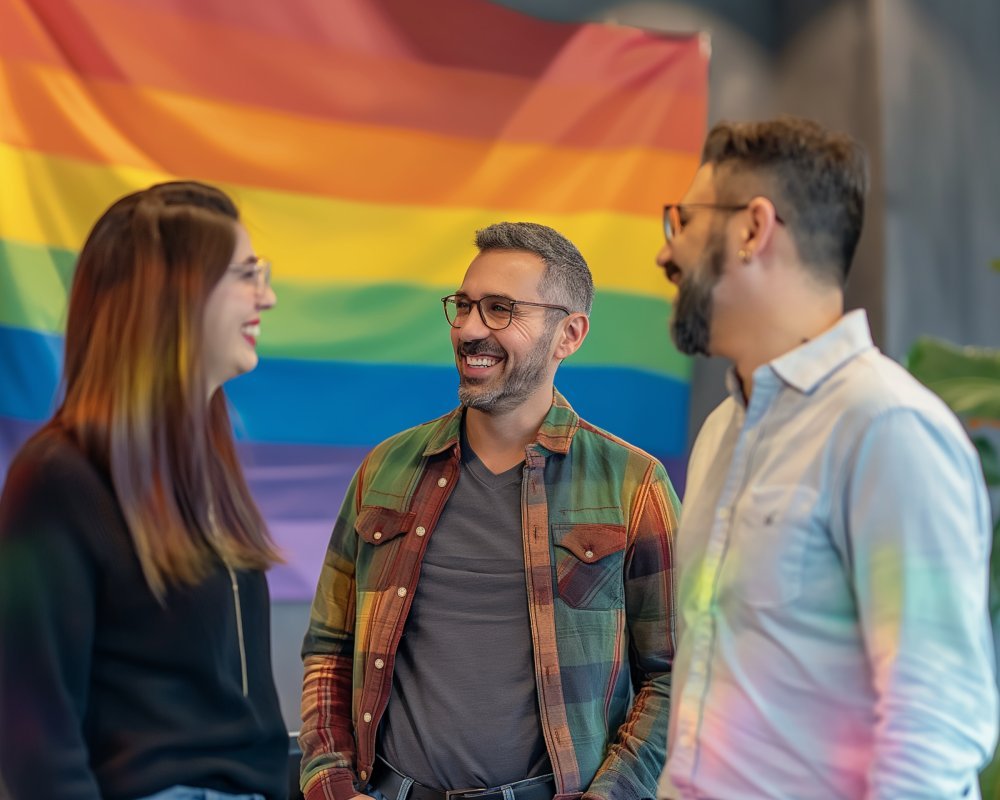
5.2. Diversity Within Gay Communities
No single orientation can define one’s tastes, political views, or daily routines. The “lifestyle” of a rural gay farmer in the Midwest, for instance, contrasts starkly with that of a gay tech entrepreneur in San Francisco. Religion, cultural background, socio-economic status, and personal interests matter just as much as orientation.
5.3. Common Cultural Touchstones
That said, some gay communities cultivate shared references or traditions, often born from historical exclusion:
- Chosen Families: Many LGBTQ folks create familial bonds with friends or mentors, compensating for rejection by biological relatives.
- Icons and Entertainment: Divas like Madonna, Lady Gaga, or Beyoncé are championed by segments of the gay community who resonate with themes of empowerment and flamboyance.
- Safe Spaces: Bars, Pride events, or LGBTQ centers can function as hubs of social life and solidarity, offering an affirming environment.
5.4. The Myth of Uniform Politics
Another stereotype is that all gay people are liberal or left-leaning. While progressive politics are often associated with gay rights, there are conservatives, libertarians, socialists, and everything in between in the LGBTQ community. One’s orientation doesn’t dictate their entire worldview—though discriminatory policies may shape political allegiances.
5.5. Reclaiming the Narrative
Historically, the phrase “gay lifestyle” was used by opponents of LGBTQ rights to suggest unnatural or immoral living. Today, gay individuals often challenge that language, emphasizing that being gay is an orientation, not a chosen hobby or fleeting style. Some reclaim the term ironically, celebrating the “gay lifestyle” as inclusive, vibrant, and proud, while others reject it altogether.
In short: The concept of a singular “gay lifestyle” is largely a myth. While subcultures exist, orientation alone doesn’t define one’s clothing, interests, or social habits. Gay life is as varied as heterosexual life—filled with nuance, personal preference, and cultural influence. Debunking these stereotypes enables a more expansive, accurate view of the LGBTQ community.
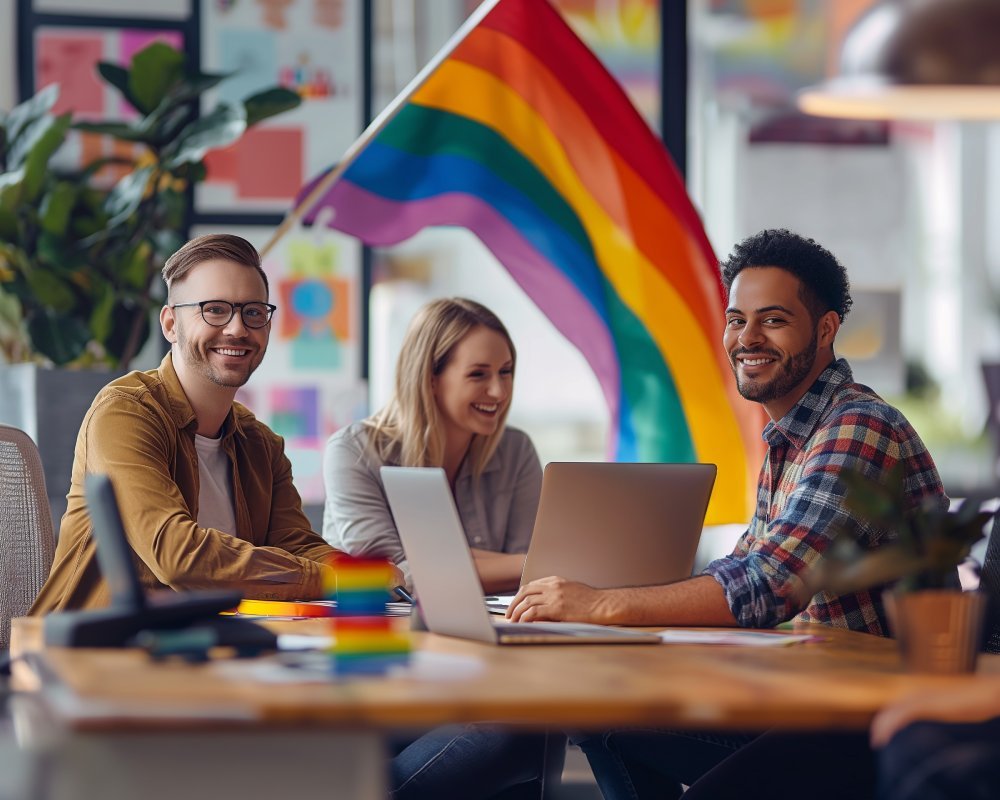
Advertisement · Scroll to continue
Recommended
6. Growing Up Gay: What It’s Really Like to Come of Age as an LGBTQ Youth
One of the most formative experiences in gay life is adolescence—when sexual orientation begins to crystallize and identity conflicts may arise. What’s it really like to grow up gay? The answer differs for everyone, but there are common threads in discovering, processing, and revealing one’s orientation.
6.1. Early Awareness and Confusion
Many gay people recall noticing “differences” in childhood. Perhaps they felt attraction to same-sex peers or found themselves out of step with stereotypical gender norms. Without supportive language or role models, confusion abounds. Some children try to fit into expected roles—like a boy forcing interest in sports or a girl feigning crushes on boys.
6.2. Bullying and Isolation
School settings can be harsh, especially if peers perceive someone as “gay” or “queer” before they can articulate it themselves. Homophobic slurs, bullying, or social exclusion cause deep psychological scars. In extreme cases, an LGBTQ teen might become depressed, anxious, or suicidal. This underscores the significance of anti-bullying policies and inclusive environments.
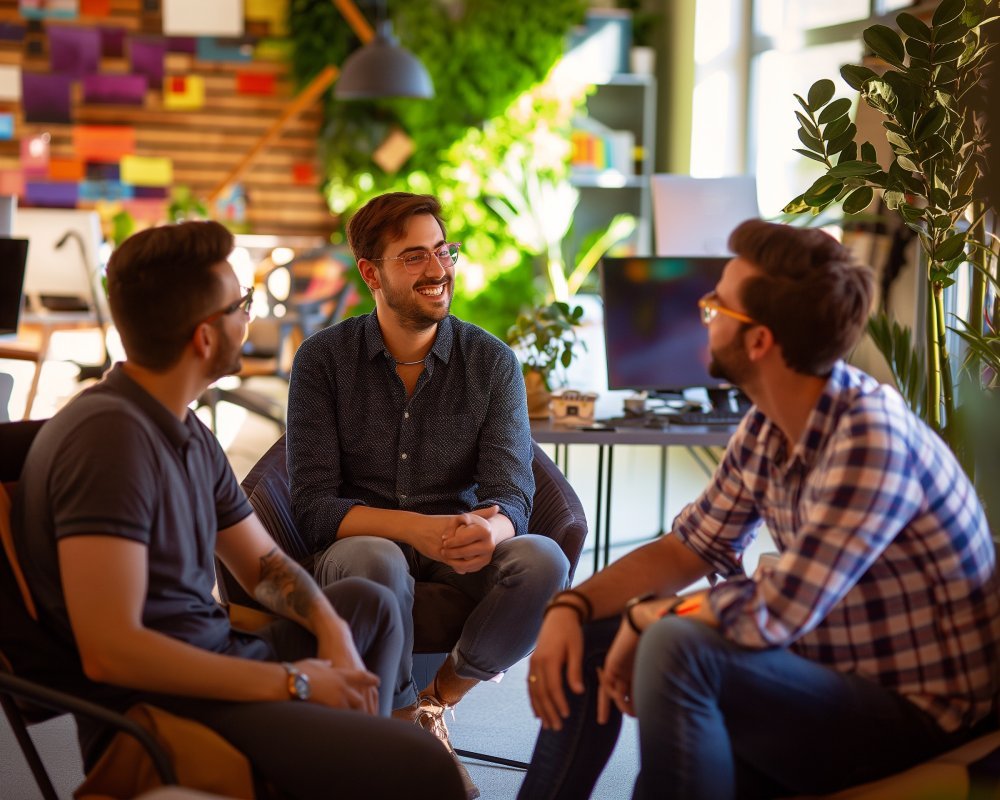
6.3. Family Dynamics
Family acceptance (or rejection) profoundly shapes a young gay person’s well-being:
- Supportive Families: Some parents affirm their child’s orientation, offering unconditional love. This acceptance fosters confidence and reduces mental health risks.
- Rejecting Families: Others respond with shock, anger, or demands for change. Teens might face ultimatums or be kicked out of their homes. Homelessness among LGBTQ youth is alarmingly high, in part due to familial rejection.
6.4. Coming Out
The act of “coming out” is a pivotal milestone. It can happen in adolescence or adulthood, depending on personal circumstances. Many weigh the potential risks—losing friends, disappointing parents, or facing harassment—against the emotional toll of hiding. Coming out can be liberating, yet nerve-wracking, as acceptance is never guaranteed.
6.5. Online Communities and Role Models
Today’s LGBTQ youth can find solace on social media, forums, or YouTube channels. Seeing gay influencers or activists who share stories of hardship and resilience can help a teen realize they aren’t alone. Virtual friendships may buffer real-world isolation. Still, digital spaces also carry risks of cyberbullying or misinformation.
6.6. First Loves and Heartbreak
Adolescent romances can be complicated by closeted partners, secrecy, or lack of supportive peer groups. Some gay teens might date in secret or craft elaborate ruses to hide their relationships. Others, in more open settings, can attend proms with same-sex dates—a once unthinkable scenario but increasingly accepted in many schools.
6.7. Transition to Adulthood
By college or early career, many gain the freedom to relocate to more LGBTQ-friendly locales, discover queer communities, or attend Pride events. This transition fosters identity formation, letting them explore romantic relationships and social circles aligned with their orientation. Yet the wounds of childhood bullying or family rejection can linger, necessitating healing and therapy for some.
Key Insight: Growing up gay can be fraught with challenges but also replete with opportunities for personal strength. Many recall forging fierce resilience, empathy, and appreciation for diversity. Schools, mentors, and families who foster acceptance can drastically improve outcomes. For an LGBTQ youth, acknowledging “it gets better” isn’t just a slogan—it’s a genuine reflection of how adulthood and community support can bring liberation and joy.
7. Family and Community Acceptance: Navigating Reactions to Coming Out
Emerging from adolescence, one of the most significant rites of passage for gay individuals is revealing their orientation to loved ones. This “coming out” process profoundly influences how their gay life unfolds, shaping self-esteem, mental health, and familial bonds.
7.1. The Spectrum of Coming-Out Experiences
- Immediate Acceptance: In the best scenarios, parents and siblings respond with love and reassurance. Some might say they “already knew” or suspected, offering immediate support.
- Mixed or Delayed Acceptance: Relatives may express shock, confusion, or sadness but eventually come around, often after dialogue or meeting other LGBTQ individuals.
- Rejection: Tragically, some families respond with hostility. They might try conversion therapy, impose religious condemnation, or disown the individual. This extreme reaction can fracture relationships permanently.
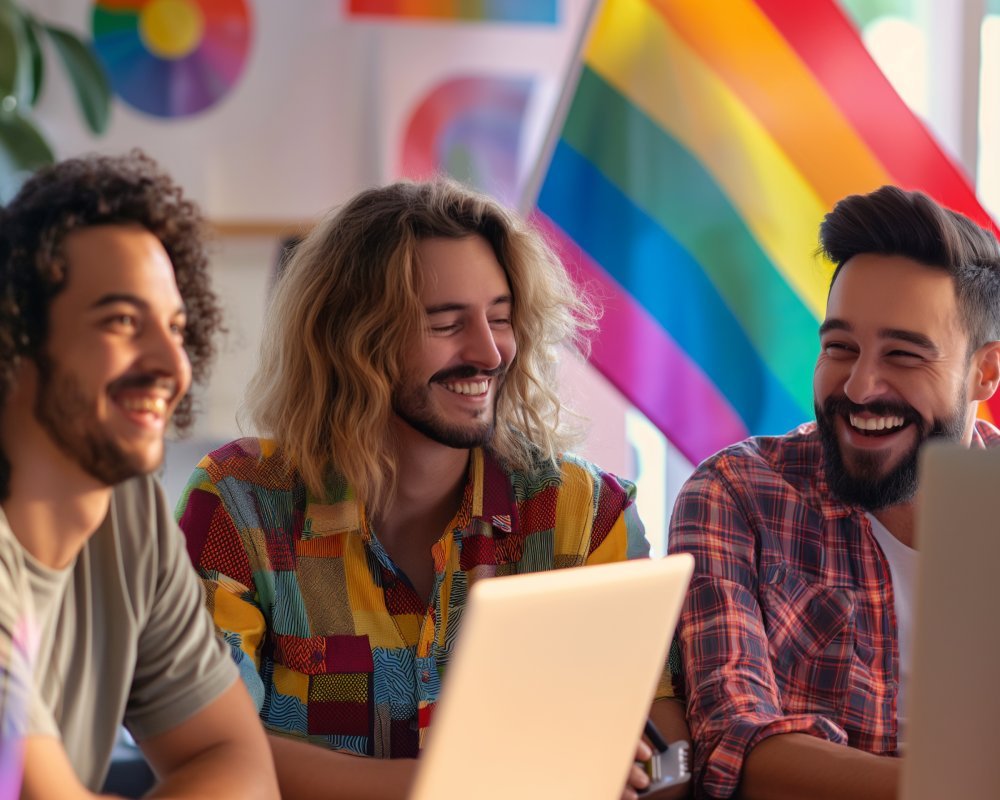
7.2. Strategies for a Smoother Coming Out
- Preparation: Some people rehearse or role-play possible reactions, or they come out to a trusted friend or therapist first for moral support.
- Choosing the Right Time and Place: Coming out during a calm, private moment can mitigate tension.
- Offering Resources: Handing family members reading materials or pointing them to PFLAG (Parents, Families, and Friends of Lesbians and Gays) can ease them into understanding.
7.3. Cultural and Religious Factors
In communities where tradition or religious doctrines strongly oppose homosexuality, acceptance may be harder to achieve. People of faith might interpret one’s orientation as sinful, leading to moral conflicts. Conversely, liberal congregations or progressive cultural enclaves might embrace LGBTQ members wholeheartedly. Where acceptance lags, individuals sometimes relocate or create “chosen families” to find belonging.
7.4. The Role of Support Groups
Organizations like PFLAG or local LGBTQ community centers facilitate dialogues between families and queer loved ones. Attending group sessions or workshops can demystify gay life for parents, enabling them to see their child’s orientation as normal rather than deviant. Support networks accelerate reconciliation and understanding.
7.5. Impact on Mental Health and Well-Being
Positive family acceptance correlates with lower depression, suicidality, and substance abuse among LGBTQ youth. Conversely, rejection can spiral into homelessness, mental health crises, or harmful coping mechanisms. This underscores the importance of compassionate, informed parental support in shaping healthy adulthood.
7.6. Rebuilding Ties
Even after an initial negative reaction, families can evolve. Sometimes, parents eventually attend Pride parades, celebrate same-sex weddings, or become vocal LGBTQ allies. Relationship repair may require patience, therapy, and open communication, but many stories highlight that love and time can mend wounds.
In essence: Family acceptance (or lack thereof) is a cornerstone of gay life. While some celebrate unconditional support, others endure heartbreak. Yet across these varied experiences, a consistent truth emerges: a caring, open-minded family can significantly buffer the challenges of being gay, enabling individuals to flourish with confidence and self-love.

8. Gay Life in the U.S.: From Urban Enclaves to Rural Communities
When people discuss gay life in the United States, they often envision bustling gay neighborhoods in San Francisco, New York’s Chelsea, or Chicago’s Boystown. Yet LGBTQ Americans inhabit all corners of the country—from big coastal cities to small Bible Belt towns. Let’s examine the diverse realities shaping LGBTQ Culture and Life in the U.S..
8.1. Urban Centers: Safe Havens and “Gayborhoods”
Major cities frequently serve as magnets for LGBTQ individuals. They offer:
- Gay Bars and Cultural Venues: Spaces like drag clubs, queer art galleries, or performance spaces thrive in larger cities.
- Community Resources: Nonprofits, health clinics, and advocacy groups cluster in urban areas, providing legal, medical, and social support.
- Social Networks: Meeting people is easier in more populous regions, from dating to friendship circles.
Examples: San Francisco’s Castro District, with its rainbow crosswalks, stands as a historical epicenter of gay activism. In New York, Greenwich Village and Chelsea became synonymous with LGBTQ nightlife and Pride parades.

8.2. “Second Cities” and Emerging Hotspots
While historically overshadowed by the likes of NYC or LA, mid-sized cities such as Austin, Columbus, Portland, and Atlanta now have vibrant gay scenes. Affordable living costs, thriving universities, and inclusive attitudes draw younger LGBTQ residents, fueling dynamic local cultures.
8.3. Rural Realities: Isolation and Resilience
Contrary to stereotypes, many gay people reside in rural America. They might operate farms, teach in local schools, or serve as small-town entrepreneurs. Challenges abound, including:
- Limited Community: Gay bars or LGBTQ centers might be non-existent within 100 miles.
- Conservative Social Climate: Religious or traditional mindsets can intensify homophobia. Some remain partially closeted to avoid conflict.
- Innovative Coping: Rural LGBTQ folks often rely on online communities, weekend getaways to bigger cities, or forming tight-knit local friend networks.
8.4. Regional Variations
- West Coast: States like California and Washington frequently champion progressive LGBTQ policies, though each city or suburb varies.
- Northeast: Regions like New England are historically liberal, with early same-sex marriage adoption.
- South: Widespread conservatism means legal protections can be patchy, but enclaves like Atlanta or New Orleans offer robust communities.
- Midwest: Chicago, Minneapolis, and Columbus are hubs, but rural pockets might be less tolerant.
8.5. Cultural Exchange and Pride Celebrations
Every June, Pride festivals bloom across the nation. Each city’s Pride reflects local culture: some are massive parades with corporate sponsorship, while others remain grassroots gatherings. These events highlight progress, commemorate Stonewall, and unify diverse populations under rainbow banners, fostering visibility and activism.
8.6. Post-Marriage Equality Landscapes
After the Supreme Court legalized same-sex marriage (Obergefell v. Hodges, 2015), many gay couples married in their hometowns. Yet discrimination in employment, housing, or public accommodations persists in several states lacking robust LGBTQ protections. So, while marriage recognition advanced acceptance, the day-to-day realities can still diverge sharply based on location.
Conclusion: Gay life in the U.S. defies monolithic definition. Vibrant, openly gay enclaves thrive in certain metros, while rural individuals navigate subtler forms of community or remain discreet. The country’s size and diversity yield a spectrum of experiences—some jubilant, others cautious. Recognizing these nuances is vital when discussing a “gay lifestyle” in America.
9. Intersectionality: Race, Religion, Disability, and Other Layers of Identity
No exploration of what is gay life like can omit the concept of intersectionality—the recognition that identities such as race, ethnicity, religion, disability, or socioeconomic status intersect with sexual orientation, shaping unique experiences.
9.1. Race and Ethnicity
Gay individuals of color may confront racism within LGBTQ circles, as well as homophobia within their racial/ethnic communities. This dual marginalization makes acceptance more complex. Organizations like the National Black Justice Coalition or Latino LGBTQ groups provide targeted support, bridging cultural pride with queer identity.
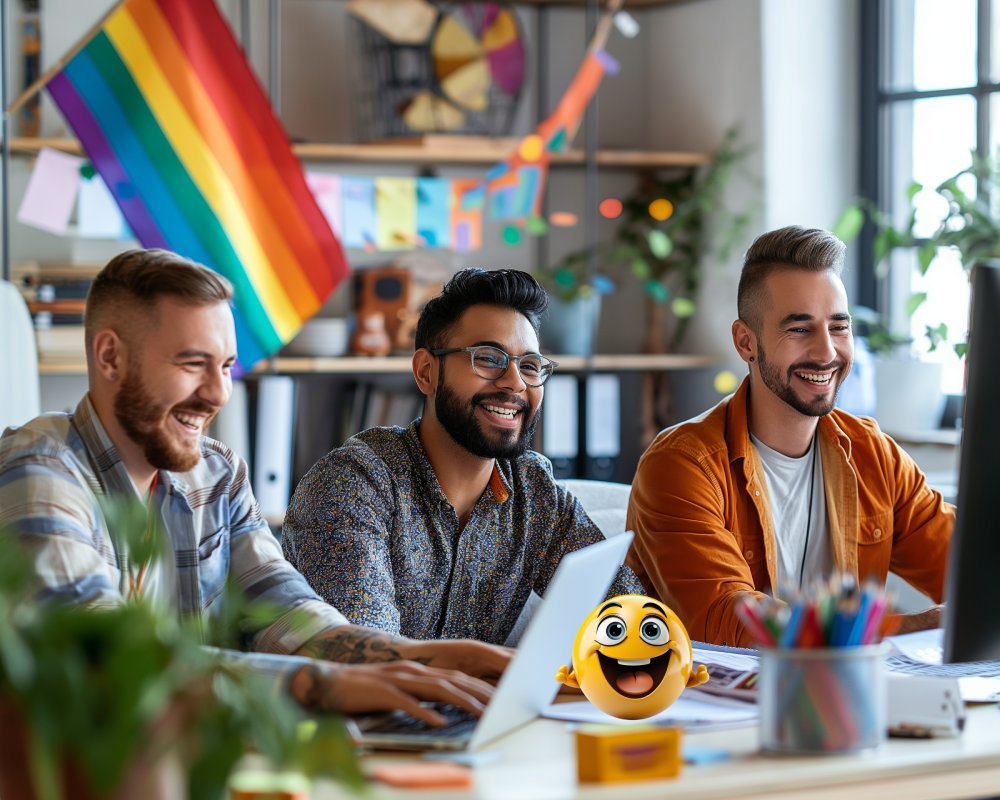
9.2. Faith and Spirituality
Religion sometimes conflicts with homosexuality. Many conservative denominations label same-sex relationships sinful. Consequently, devout gay individuals might wrestle with guilt or community rejection. Yet liberal congregations—Christian, Jewish, Muslim, or otherwise—have emerged, affirming LGBTQ members. Spiritual LGBTQ folks often find solace in inclusive faith networks, proving that orientation and religion aren’t necessarily incompatible.
9.3. Disabilities Within Gay Communities
People with disabilities can face inaccessibility at gay clubs or Pride events, complicating their social engagement. They might also encounter ableism or fetishization. Conversely, some LGBTQ disability advocacy groups highlight inclusive design, ensuring that queer spaces accommodate all bodies and neurodiversities.
9.4. Class and Economic Factors
Wealthy gay individuals might live comfortably in trendy neighborhoods and travel abroad freely. Conversely, low-income LGBTQ folks navigate survival-level concerns: unstable housing, meager wages, or minimal healthcare access. Economic disparities shape daily life more than orientation alone, revealing hidden inequalities within the “rainbow community.”
9.5. Gender Identity and Expression
Transgender, non-binary, or gender-nonconforming persons often face distinct battles beyond sexual orientation. Some gay spaces historically centered cisgender gay men, inadvertently marginalizing trans members. Intersectional activism pushes for broader acceptance, encouraging synergy among all LGBTQ subgroups.
9.6. Bridging Gaps
Intersectional coalitions—like alliances between LGBTQ groups and racial justice movements—drive progress. They highlight issues such as police profiling of queer people of color or healthcare barriers for trans immigrants. By recognizing how oppression layers, communities can craft inclusive solutions that respect every facet of identity.
Bottom Line: The “gay lifestyle” or experience is never purely about orientation. One’s race, culture, faith, or disability can strongly color how they exist in the world as a gay person. Intersectionality underscores the complexity of oppression and the necessity of broad-based empathy and activism to achieve true inclusivity.

10. How Has Being Gay Made Life More Difficult? Common Challenges and Obstacles
Even at Its Best, the Gay Life Is a Hard One—this statement resonates with many LGBTQ individuals who’ve navigated hostility, legal barriers, or internal struggles. Let’s examine the core challenges that underscore “How has being gay made your life more difficult?”
10.1. Homophobia and Discrimination
- Bullying and Harassment: From playground taunts to workplace microaggressions, homophobia can manifest in daily life.
- Hate Crimes: Some endure physical violence or threats solely due to their orientation.
- Employment Discrimination: In places lacking explicit legal protections, being gay can jeopardize job security or promotions.
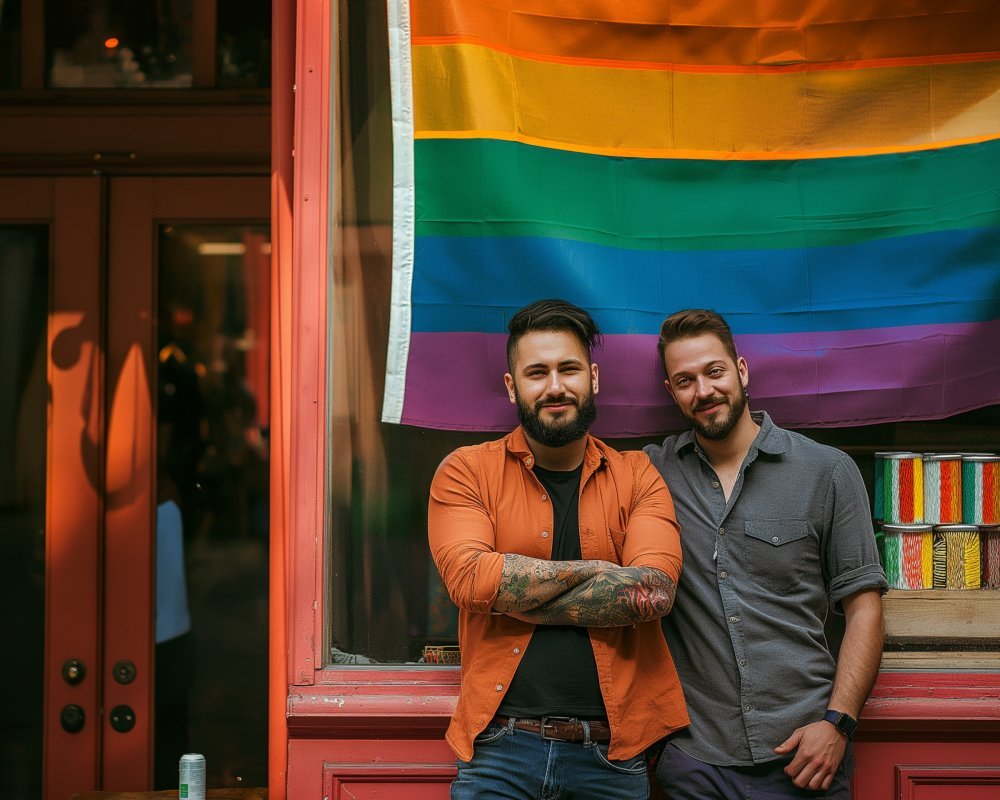
10.2. Internalized Homophobia
Societal messaging that homosexuality is sinful, deviant, or lesser can embed in an individual’s psyche, creating guilt or self-loathing. Undoing these beliefs requires emotional work and supportive therapy, especially for those reared in conservative environments.
10.3. Coming-Out Risks
Revealing one’s orientation can risk losing family support or friendships. Fear of rejection sometimes leads individuals to postpone coming out, stifling personal authenticity. In extreme cases, families sever ties, leaving the person homeless or financially precarious.
10.4. Mental Health Stressors
Studies indicate higher rates of depression, anxiety, and suicidal ideation in the LGBTQ population. Minority stress—where stigma, discrimination, and microaggressions accumulate—can erode mental well-being. Without adequate coping mechanisms or resources, one’s psychological health can suffer.
10.5. Relationship Recognition Issues
Though marriage equality is established in some countries, traveling or relocating to anti-LGBTQ regions can nullify spousal rights. Even in supportive jurisdictions, couples might face social prejudice, limiting public displays of affection or leading to awkward interactions with extended family.
10.6. Cultural and Religious Conflict
Growing up in devout religious communities can heighten the conflict between faith and identity. Some are forced into conversion therapies or ex-gay ministries, further traumatizing them. Alternatively, closeted individuals might live in constant stress to align with religious expectations.
10.7. Lack of Role Models
Despite increased visibility, many gay youths still struggle to find mentors who share their orientation. Heteronormativity in society can leave them feeling they must chart an unfamiliar path alone, complicating self-discovery and future planning.
Crucial Perspective: Acknowledging these difficulties doesn’t negate the joy and resilience found in gay communities. But it does illustrate that “What Is Gay Life Like?” frequently involves obstacles not faced by straight peers. Overcoming them demands community solidarity, legal reforms, and cultural awareness—ensuring fewer gay individuals endure needless adversity.
11. Mental Health in the Gay Community: It’s Not Easy Being Gay
Opinion: It’s Not Easy Being Gay—this statement rings true for those grappling with mental health strains linked to homophobia, exclusion, or trauma. Although progress is notable, challenges remain, requiring a focus on resilience and healing in the LGBTQ population.

11.1. Minority Stress and Its Effects
“Minority stress” theory posits that marginalized groups face unique stressors—stigma, discrimination, internalized negative messages—leading to elevated mental health risks. Gay individuals might battle chronic vigilance, worrying about safety or acceptance, contributing to elevated rates of anxiety and depression.
11.2. Substance Use and Self-Medication
In attempts to cope with stress or conceal orientation, some gay individuals turn to drugs or alcohol. Certain gay social scenes revolve around nightlife or party circuits, which can amplify substance dependency. Interventions must address underlying emotional needs, not merely the substance use alone.
11.3. Suicide Risks
Disproportionately high suicidal ideation and attempts among LGBTQ youth indicate the dire toll of unaccepting environments. Bullying, isolation, and family rejection can push some to despair. Suicide prevention hotlines, inclusive mental health services, and supportive school policies remain critical to saving lives.
11.4. Therapy and Support Systems
- Affirming Therapists: Mental health professionals trained in LGBTQ issues understand the intersection of orientation with cultural or familial dynamics.
- Support Groups: Peer-led groups (online or in-person) let individuals share stories, fostering validation and communal healing.
- Digital Platforms: Online counseling or forums connect those in remote or hostile areas with specialized help.
11.5. Body Image and Expectations
Some segments of gay male culture prize certain physiques (muscular, lean) or youthful appearance, sparking body dysmorphia, eating disorders, or steroid abuse. Overcoming superficial pressures is an ongoing conversation in LGBTQ circles, emphasizing self-worth beyond looks.
11.6. Hope and Resilience
Despite the darkness, many find empowerment in forging chosen families, participating in Pride events, or engaging with activism. Community resilience is a hallmark of gay life, illustrated by alliances during crises like the HIV/AIDS epidemic or the push for marriage equality. This resilience fosters optimism about mental wellness, as more resources and discussions break down stigma.
Bottom Line: Maintaining mental health can be extra challenging for gay individuals due to external prejudices and internal conflicts. However, resources for counseling, peer support, and broader societal acceptance are expanding, offering hope. Recognizing that It’s Not Easy Being Gay should fuel empathy and drive collective efforts to create nurturing, inclusive spaces.

12. Even at Its Best, the Gay Life Is a Hard One: Societal Pressures and Minority Stress
“Even at Its Best, the Gay Life Is a Hard One.” This phrase acknowledges that while some gay people thrive, they’re still navigating a society originally built around heteronormative assumptions. Minority stress lingers, adding layers of pressure that can hamper well-being, even in relatively supportive contexts.
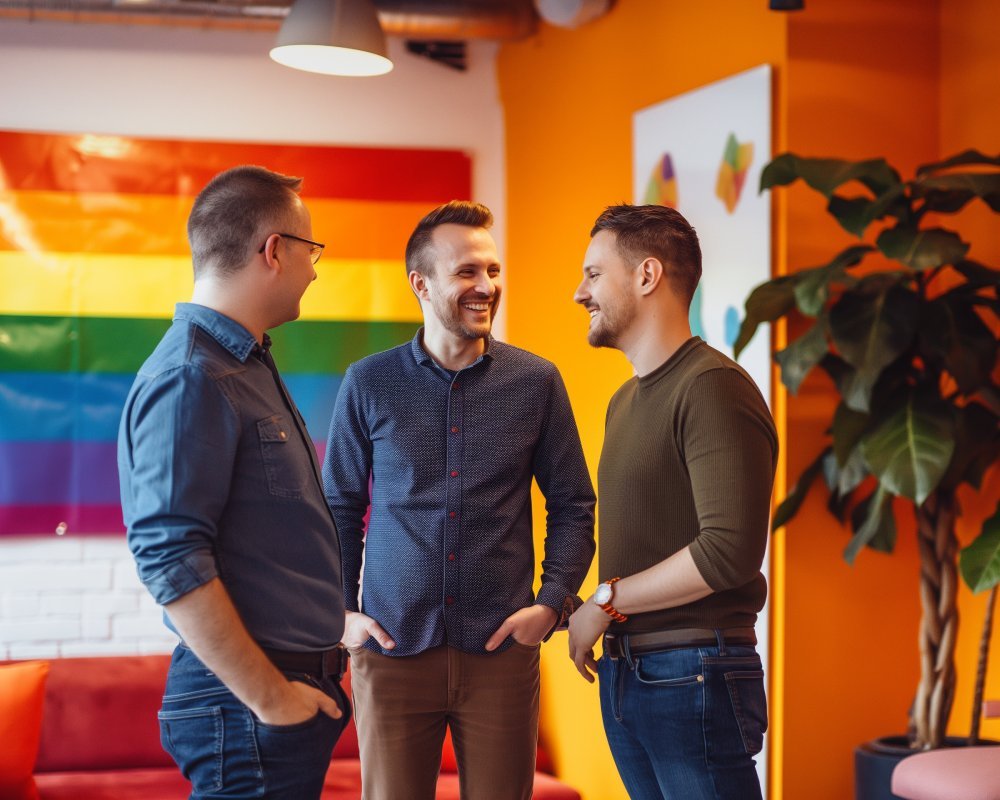
12.1. Cultural Expectations and Heteronormativity
From early childhood, society bombards us with “boy meets girl” narratives—fairy tales, TV ads, Valentine’s Day rituals. Gay youth seldom see themselves mirrored in these archetypes. They learn to adapt or decode messages subtly. Over time, constantly explaining or justifying one’s orientation weighs heavily on mental and emotional resources.
12.2. Fear of Judgment or Violence
In some regions, holding a same-sex partner’s hand in public is risky. Reports of homophobic slurs, assault, or even murder persist. This fear shapes daily life decisions—like how to dress, speak, or which neighborhood is safe. Even in advanced societies, hate crimes can occur unexpectedly, reinforcing vigilance.
12.3. Relationship Milestones
Many gay couples celebrate relationship milestones differently—like finding wedding planners who cater to same-sex events or navigating surrogacy or adoption processes that are more complex than for straight couples. Although marriage equality simplifies aspects, administrative red tape or societal attitudes remain obstacles.
12.4. Aging and Loneliness
Some older gay adults lack the familial support (children, close relatives) that many straight seniors rely on. Historically, they may have been estranged from family. While chosen families help mitigate isolation, society’s limited awareness of LGBTQ seniors’ needs can leave them overlooked in eldercare services.
12.5. Double-Edged Visibility
In large cities, gay individuals might enjoy vibrant subcultures and pride celebrations, but heightened visibility can also invite backlash or fetishization. The mainstream popularization of “gay culture”—like Pride parades as tourist spectacles—risks trivializing lived experiences. Social acceptance can morph into commodification, overshadowing more urgent activism for those still at risk.
12.6. Inspiration Through Resilience
Despite these burdens, many gay people channel adversity into activism, art, or community leadership. Histories of discrimination spawn powerful creative works or advocacy programs. The sense of solidarity and mutual support remains a defining characteristic: LGBTQ communities have honed the art of turning struggle into fellowship.
Thus: Even in the best circumstances—progressive cities, robust support—gay life can be psychologically taxing due to deep-rooted cultural biases and minority stress. Recognizing these sustained pressures helps us approach LGBTQ issues with empathy. It also underscores that equality can’t be measured solely by legal benchmarks; social transformation must address ingrained prejudices.
13. Navigating Dating, Relationships, and Marriage
Romantic relationships are a central pillar of human experience. For gay individuals, dating and relationships can be exhilarating yet complicated by societal norms, biases, or small dating pools. Yet the legalization of same-sex marriage in many places signals a new era for love and commitment in the LGBTQ community.
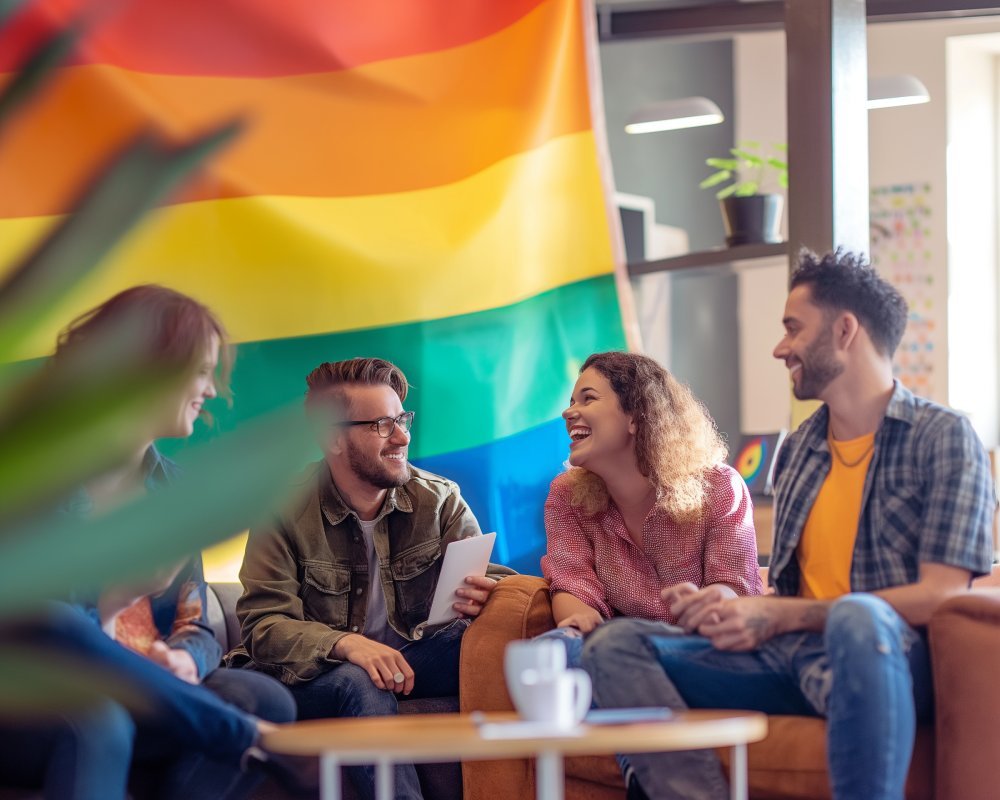
13.1. Dating in a Heteronormative World
- Coming-Out Stage: Some folks only date after feeling secure in their orientation, so they might lack teenage dating experience or rely on stealthy online chats.
- Online and App Culture: Gay men especially rely on dating apps (e.g., Grindr, Scruff) to find potential matches. While it offers convenience, it can also breed superficial judgments (body type, age, ethnicity filters).
- Discrimination and “Preferences”: Racism, femme-shaming, or ageism often appear in gay dating profiles, revealing internal biases. This can dishearten those consistently sidelined.
13.2. Relationship Models
While monogamy remains common, gay couples might explore open relationships or polyamory, freed from historical heterosexual norms. Without a single “expected” script, couples negotiate boundaries and values that suit them. Communication and trust are paramount.
13.3. Same-Sex Marriage: Affirmation and Complexity
Legal marriage spares couples from legal uncertainties about finances, medical decisions, or spousal benefits. It also validates their commitment in front of friends and family. However, cross-border issues remain if a couple’s marriage is unrecognized elsewhere. Additionally, religious or traditional families might dismiss a same-sex wedding’s legitimacy, straining relationships.
13.4. Parenting Approaches
- Adoption: Many same-sex couples adopt, fulfilling parental aspirations while giving a child a loving home.
- Surrogacy or IVF: Men might pursue surrogacy, women might opt for IVF with donor sperm, and transgender couples might also have unique fertility paths. Each approach demands legal clarity.
- Blended Families: Some bring children from prior heterosexual relationships, adding extra layers of co-parenting and acceptance challenges.
13.5. Relationship Challenges and Support
LGBTQ couples can’t always rely on mainstream marriage advice since it may skip queer-specific dynamics. Therapists specializing in LGBTQ issues can help address internalized homophobia, extended family tension, or sexual intimacy concerns shaped by stigma. Community workshops or couples retreats also foster growth.
13.6. Celebrating Love and Community
Despite the complexities, gay weddings have proliferated with distinctive flair—like rainbow-themed decorations or drag performances. Couples often blend tradition with personal creativity, forging ceremonies that reflect their identity. These celebrations strengthen communal bonds, showing younger generations that lasting, committed relationships are possible and cherished in gay life.

14. LGBTQ Culture and Life in the U.S.: Icons, Media, and Gay Neighborhoods
From renowned drag queens to iconic Pride parades, LGBTQ culture in the United States weaves creativity, activism, and resilience into everyday life. In this section, we’ll journey through the influences shaping gay culture, from media representation to the physical spaces that foster community.
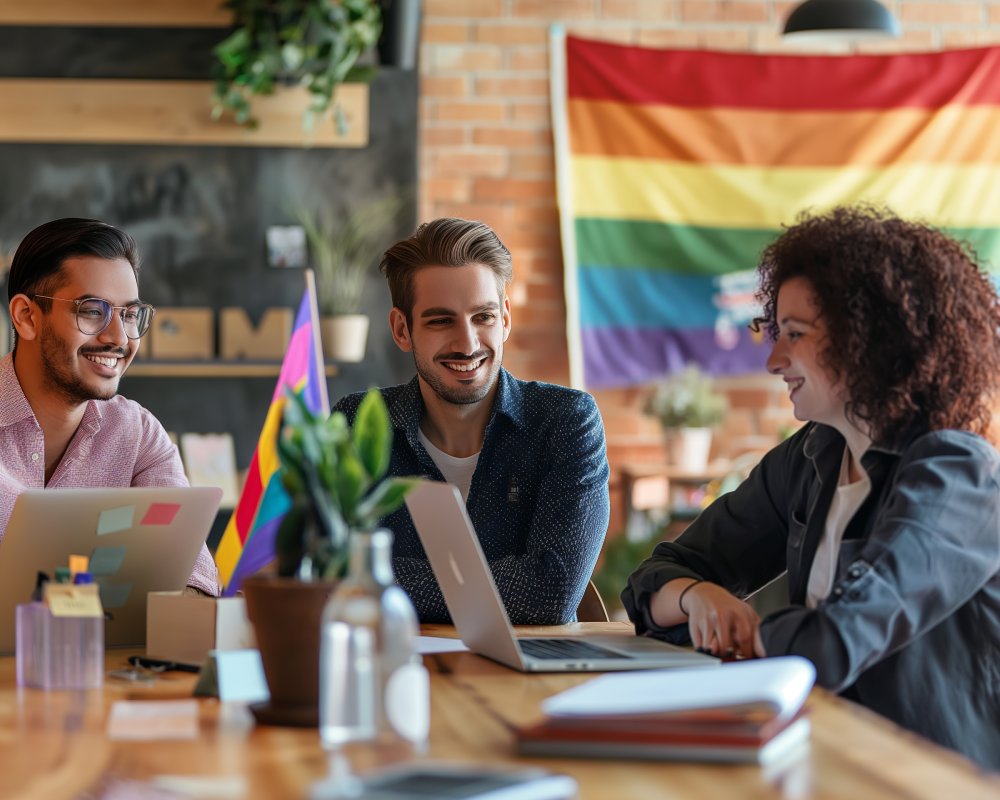
14.1. Media Representation and Icons
- Golden Age of Queer TV: Shows like “Will & Grace,” “Queer as Folk,” or “Pose” integrated gay storylines into mainstream television, championing acceptance. More recent series (e.g., “Schitt’s Creek”) have normalized same-sex love.
- Celebrity Advocates: Public figures like Ellen DeGeneres, Lil Nas X, or Janelle Monáe spur conversation around orientation, bridging generational and cultural gaps.
- Drag Culture: Popularized by “RuPaul’s Drag Race,” drag has become a mainstream phenomenon, celebrating camp, wit, and artistry. This show, and local drag scenes, highlight how performance can unify and empower LGBTQ individuals.
14.2. Pride Festivals and Celebrations
Pride month in June commemorates Stonewall’s legacy. Major city parades (e.g., NYC, San Francisco) draw millions, featuring floats, dancers, and speeches. Smaller towns host more modest but equally spirited events. Pride fosters visibility, fosters activism, and honors those lost to AIDS or hate crimes.
14.3. Gay Neighborhoods or “Gayborhoods”
Areas like West Hollywood, Chicago’s Boystown, or Philadelphia’s Gayborhood historically served as safe havens, where LGBTQ establishments, housing, and supportive services clustered. These districts cultivated a sense of belonging, though gentrification and assimilation have sometimes changed their character. Still, they remain cultural epicenters.
14.4. Literature, Art, and Film
Queer authors—like James Baldwin, Audre Lorde, or Armistead Maupin—shaped LGBTQ literature, challenging societal taboos. Today, novelists, poets, and filmmakers continue exploring identity, love, and struggle in ways that speak to both queer and straight audiences. Film festivals like Frameline in San Francisco spotlight queer cinema’s diversity.
14.5. Evolving Nightlife Scenes
Gay bars and clubs historically functioned as sanctuaries when mainstream spaces rejected gay patrons. As acceptance grew, some nightclubs closed or integrated, while others thrived as iconic institutions. While nightlife remains an integral part of gay socializing, a portion of the community seeks alternatives like sober spaces or art collectives, catering to diverse tastes.
14.6. Tensions Between Commercialization and Authenticity
As queer culture gained mainstream traction, corporate sponsorships boomed at Pride events, leading to debates: does commercialization overshadow radical roots? Some see corporate involvement as normalizing and beneficial for resource generation. Others lament the overshadowing of grassroots activism by flashy ads. Balancing inclusivity and authenticity remains an ongoing conversation.
Conclusion: LGBTQ culture in the U.S. is dynamic, shaped by historical activism, creative expression, and community-building. From drag performance to literature, from gay neighborhoods to Pride extravaganzas, these cultural veins reflect resilience, joy, and an ever-evolving identity. Knowing these cultural pillars enriches our understanding of what gay life is like in America.
15. Social Media, Apps, and the Digital Age of Gay Life
In the internet era, the fabric of gay life increasingly weaves through digital platforms. Social media, dating apps, and online communities have revolutionized how LGBTQ individuals connect, advocate, and find belonging, regardless of geographical limitations.

15.1. The Rise of Dating and Hookup Apps
- Pioneers: Apps like Grindr, launched in 2009, used geolocation to link nearby gay men. Similar apps emerged for various subgroups, from men seeking discreet encounters to women seeking serious relationships.
- Pros: They facilitate quick connections, especially in rural or conservative areas lacking physical LGBTQ spaces. Users can filter for shared interests or relationship goals.
- Cons: A “hookup culture” focus may foster superficial interactions. Racial or body-preference discrimination surfaces in profile descriptions, e.g., “No fems, no Asians,” breeding toxic norms.
15.2. Social Networks and Influencers
Platforms like Instagram, TikTok, and YouTube host gay influencers who share personal narratives, comedic skits, or activism. Teenagers exploring orientation can find supportive content, while older generations share memories and advice. Hashtags (e.g., #GayLife, #ComingOut, #GayInfluencer) form virtual meeting grounds.
15.3. Cyberbullying and Hate Speech
Online anonymity emboldens trolls. Homophobic slurs or harassment remain common in comment sections or direct messages. This can re-traumatize LGBTQ netizens, especially younger ones. Many platforms, however, implement anti-hate policies, though enforcement can be inconsistent.
15.4. Activism and Crowdfunding
- Hashtag Activism: Movements like #LoveIsLove or #ItGetsBetter encourage solidarity and share uplifting stories.
- Fundraising for Emergencies: Sites like GoFundMe help gay individuals raise funds for medical needs or assist those displaced by family rejection. Online petitions mobilize supporters for legislative changes quickly.
15.5. Creation of Niche Communities
Discord servers, Facebook groups, or specialized forums let LGBTQ folks connect over shared interests—gaming, spirituality, parenting, or professional networking. Such micro-communities foster deeper bonds than general social media. They can also be lifelines for those in regions with limited offline LGBTQ presence.
15.6. Balancing Virtual and Real-World Interaction
While online spaces can complement real-life communities, excessive screen time risks fostering isolation or perpetuating unrealistic ideals. Encouraging in-person meetups (e.g., hiking groups, coffee gatherings) helps maintain a healthy interplay between digital and offline spheres. Apps often act as stepping stones to building real-life friendships, romances, or professional networks.
In Summation: The digital revolution catapulted gay life into new realms of connection and visibility. From hooking up to activism, from building niche communities to crowdfunded philanthropic causes, technology shapes daily experiences. Though not without pitfalls—like discrimination or cyberbullying—online platforms continue bridging gaps for LGBTQ individuals across geographic divides.
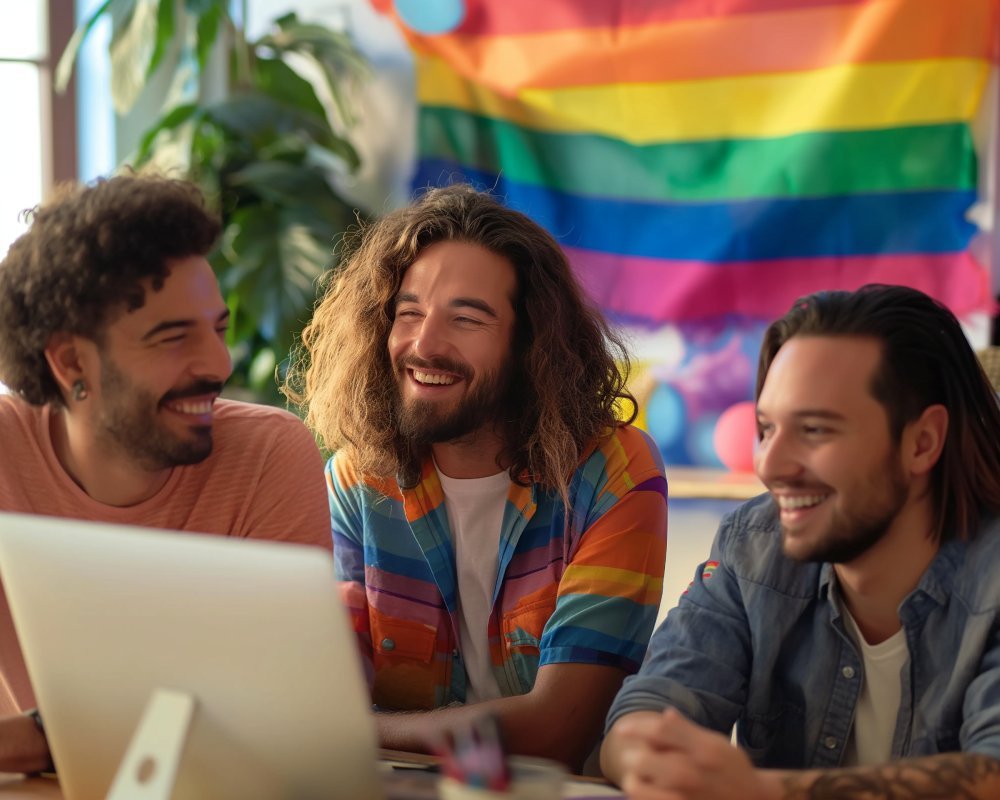
16. Activism, Political Engagement, and Community Building
Gay life isn’t solely about personal experiences—it also involves collective action. Over decades, LGBTQ activists have rallied for civil rights, fueling breakthroughs like anti-discrimination laws, marriage equality, and broader acceptance. This interplay between personal identity and political engagement remains core to modern gay culture.

16.1. Grassroots Advocacy
Local groups, from campus Pride clubs to neighborhood organizations, form the bedrock of activism. They run educational workshops, protest unjust policies, or collaborate with city councils to pass inclusive measures. Grassroots activism can directly improve daily gay life, from ensuring safe schools to organizing community events.
16.2. National Organizations
Major LGBTQ advocacy groups—like the Human Rights Campaign, GLAAD, or PFLAG—mobilize funds, lobby lawmakers, and shape media narratives. They track legislation on issues like hate crimes, healthcare access, or youth welfare. Membership or donations to such organizations help scale local concerns to national agendas.
16.3. Political Representation
Openly gay politicians serve in offices ranging from local councils to governorships, even congressional seats. Their presence breaks stereotypes and champions LGBTQ-friendly policies. Yet not all gay politicians align with mainstream LGBTQ movements; some hold conservative views, underscoring that orientation doesn’t dictate ideology.
16.4. Community Centers and Safe Spaces
Physical community centers often act as central hubs for resources—counseling, job search assistance, and events. They host youth groups, health clinics (e.g., for HIV testing), and legal aid. Volunteer-led or city-funded, these centers become lifelines for marginalized LGBTQ folk.
16.5. Intersectional Movements
Racial justice movements, women’s movements, disability rights, and trans liberation intersect with gay rights. Coalitions broaden the impact—like the alliance between Black Lives Matter and queer organizations highlighting how racism intensifies queer vulnerabilities. Intersectional activism ensures all subgroups within the gay community thrive, not just the most privileged.
16.6. Pride as Protest and Celebration
Each June, Pride festivals commemorate Stonewall while celebrating achievements. Marches, speeches, and memorials remind attendees that the fight continues—whether battling anti-trans bills or pushing for global reforms. Pride merges joy with activism, proving that “celebration is a form of resistance.”
Takeaway: While many in the gay community live ordinary lives with minimal activism, the backbone of LGBTQ progress stems from collective engagement. Activism and community-building aren’t optional add-ons; they’re cornerstones ensuring that daily gay life can be lived with dignity and equal rights.
17. How to Be Happy as a Gay Man: Self-Care and Affirmation
Despite the challenges we’ve discussed, countless gay men cultivate fulfilling, vibrant lives. How to Be Happy as a Gay Man? It’s a nuanced question, but certain strategies and mindsets can promote well-being and self-love.
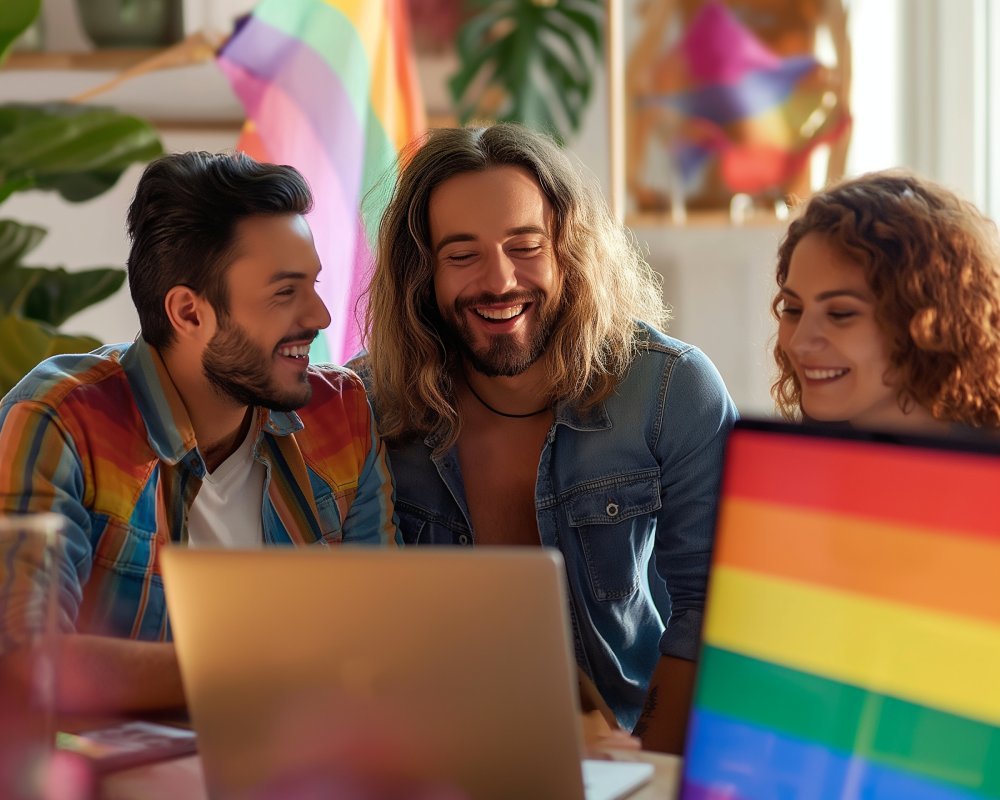
17.1. Embracing Authenticity
- Self-Acceptance: Acknowledge that your orientation is integral to who you are. Dismissing shame or the urge to conform fosters inner peace.
- Coming Out Gradually: If safety allows, share your orientation with trusted people. Leading a double life is mentally exhausting; incremental honesty can relieve stress.
17.2. Building a Supportive Network
- Chosen Family: Identify friends or mentors who affirm your identity. Chosen families can replace or complement biological ties if needed.
- Therapy or Counseling: Professionally trained LGBTQ-affirmative therapists guide men in navigating trauma, relationships, or internal conflicts.
- Community Involvement: Engaging in local gay sports leagues, LGBTQ volunteer organizations, or Pride planning committees fosters belonging and purpose.
17.3. Prioritizing Physical and Mental Health
- Health Checkups: Regular screenings for STDs, mental health check-ins, and doctor visits ensure well-being. HIV, though more manageable nowadays, still warrants awareness.
- Exercise and Nutrition: Physical wellness can elevate mood and self-esteem, combating stress.
- Mindfulness: Meditation, journaling, or mindful breathing can reduce anxiety. Apps like Headspace or Calm may help maintain emotional equilibrium.
17.4. Managing Relationship Dynamics
- Healthy Boundaries: If encountering toxic friendships, draining romantic partners, or unsupportive family, setting boundaries protects mental health.
- Dating with Intention: Clarify if you seek casual fun or a committed partnership. Honest communication wards off confusion and heartbreak.
- Learning Conflict Resolution: Practicing empathy, honesty, and compromise fosters stable relationships—romantic or platonic.
17.5. Goals, Growth, and Self-Fulfillment
- Career Aspirations: Freed from the closet, channel that energy into professional development or entrepreneurship.
- Creative Outlets: Writing, music, painting, or dance can express queer identity in cathartic ways.
- Positive Media Consumption: Follow queer influencers or read uplifting LGBTQ stories, balancing negative headlines with inspiring content.
17.6. Celebrating Achievements
Recognize milestones—coming out to a parent, completing a therapy course, starting a new job. Each success, no matter how small, exemplifies resilience. Rewarding oneself fosters a reinforcing cycle: success leads to confidence, spurring further growth.
In summary: While homophobia and internal struggles can weigh heavily, gay men can craft fulfilling lives through self-care, supportive networks, purposeful relationships, and consistent personal growth. “Happiness” doesn’t deny adversity—it emerges from resilience, acceptance, and proactive engagement with one’s identity and aspirations.

18. What’s Good About Being Gay? Celebrating Positives and Joys
Amid the serious themes of discrimination and hardship, there’s also a counterbalance: What’s Good about Being Gay? From building deep empathy to forging strong community bonds, being gay can foster unique forms of connection and self-awareness.
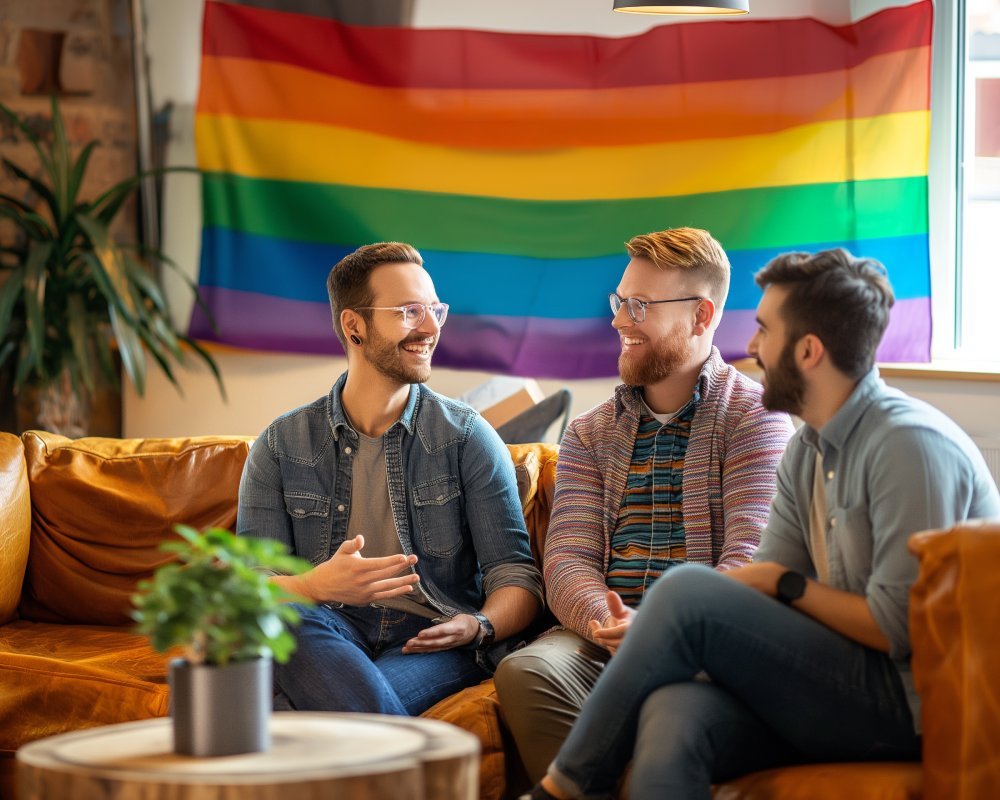
18.1. Chosen Family and Tight-Knit Communities
Many LGBTQ individuals develop chosen families—intimate friend groups who become like siblings or parental figures. These families provide unwavering love and shared experiences, forging deeper emotional ties than some blood relatives. This strong sense of loyalty and collective identity can be profoundly uplifting.
18.2. Freedom from Traditional Norms
Some appreciate that, by default, they’re not obliged to follow strict heterosexual scripts—like mandated gender roles or rigid relationship milestones. Gay individuals can pioneer new structures in relationships, child-rearing, or personal expression, reimagining what it means to be a “family man” or how to celebrate partnerships.
18.3. Creative Contributions
Historically, gay artists, writers, and performers revolutionized culture (think Tchaikovsky, Oscar Wilde, or Andy Warhol). This creative spirit persists. Queerness often inspires imaginative storytelling, fashion, film, or music that resonates worldwide. Pride parades themselves are known for flamboyance, color, and unbridled joy—testament to a strong aesthetic heritage.
18.4. Empathy and Perspective
Living as a minority fosters empathy toward other marginalized groups. Understanding prejudice firsthand often leads to activism for broader social justice issues, from anti-racism to feminism. This deeper empathy can shape more compassionate worldviews.
18.5. Courage and Resilience
Surmounting adversity—bullying, family tensions, self-doubt—builds resilience. Many gay individuals learn to rely on their internal compass, forging emotional fortitude that serves them well in all areas of life. Overcoming personal hardships can spark gratitude and humility.
18.6. Celebrating Identity
There’s joy in authenticity: wearing rainbow apparel during Pride, publicly holding hands with a partner, or simply stating “I’m gay” without fear. These acts of affirmation transform once-private truths into sources of pride and shared happiness. The camaraderie experienced at Pride marches or queer festivals exemplifies a communal euphoria, grounded in collective triumph over oppression.
Hence: Despite real challenges, being gay offers a tapestry of unique blessings—innovative cultural expressions, bonds forged in mutual understanding, freedom from heteronormative constraints, and empathy for fellow underdogs. Yes, adversity exists, but it can also fuel personal growth and tight community alliances, reminding us there is much good about being gay.
19. Comparisons and Contrasts: Gay Life Across Different Countries and Cultures
While our focus has often been the United States, LGBTQ experiences differ globally. Gay life in Canada, Brazil, China, Iran, or Kenya can vary dramatically. Let’s compare some broad patterns and note where key contrasts arise.

19.1. Legal Frameworks
- Progressive Nations: Canada, the Netherlands, Spain, and parts of Western Europe uphold comprehensive LGBTQ protections, including marriage equality and anti-discrimination laws.
- Partial Recognition: Some nations (e.g., Mexico, where marriage laws vary by state) are in flux.
- Criminalization: Over 60 countries still penalize homosexual acts; some (like Iran, Saudi Arabia) impose harsh penalties. LGBTQ folks in these regions risk arrest, violence, or forced marriage to the opposite sex.
19.2. Cultural Acceptance
- Secular Western Societies: Homophobia is widely disapproved, though pockets of prejudice persist. Public Pride events are often huge celebrations.
- Religious Strongholds: Countries with stringent religious norms may actively oppose homosexuality, though younger generations sometimes push for liberalization.
- Diverse Tolerances: Nations like Japan or Thailand show broad tolerance of LGBTQ tourists, but cultural stigmas may remain for locals.
19.3. Urban vs. Rural Divide
Regardless of the nation, large cities tend to be more LGBTQ-friendly than rural settings. Tokyo’s Shinjuku Ni-chōme hosts gay bars, while small Japanese towns might remain conservative. In Africa, Johannesburg stands out as more accepting, whereas in rural areas homophobia can be entrenched.
19.4. Activism and Community
- Global Alliances: NGOs like Amnesty International or ILGA work across borders to champion LGBTQ rights.
- Local Grassroots Movements: Courageous activists in repressive countries risk imprisonment to stage clandestine Pride events or publish queer literature.
- Diaspora Communities: Immigrants to Western countries may find freedom to be openly gay, though they might still face cultural expectations from families back home.
19.5. Social Media’s Impact
Access to the internet allows closeted individuals worldwide to connect with global LGBTQ networks, gleaning support or resources. For instance, a Middle Eastern teen might share experiences on a secret forum, forging solidarity even under draconian local laws.
19.6. Travel and Expat Life
Wealthier gay individuals from liberal countries may enjoy international trips, seeking destinations with robust gay scenes or scenic Pride festivals. However, in regions like the Middle East or parts of Africa, caution is vital—same-sex intimacy can invite legal trouble. Expat LGBTQ people often weigh job opportunities against personal safety.
Global Perspective: Gay life around the world is kaleidoscopic. Some rejoice in legal equality and flourishing subcultures; others face mortal peril for revealing their orientation. This disparity underscores the need for international solidarity. While pockets of acceptance grow, systematic oppression persists, motivating ongoing efforts to universalize LGBTQ rights.
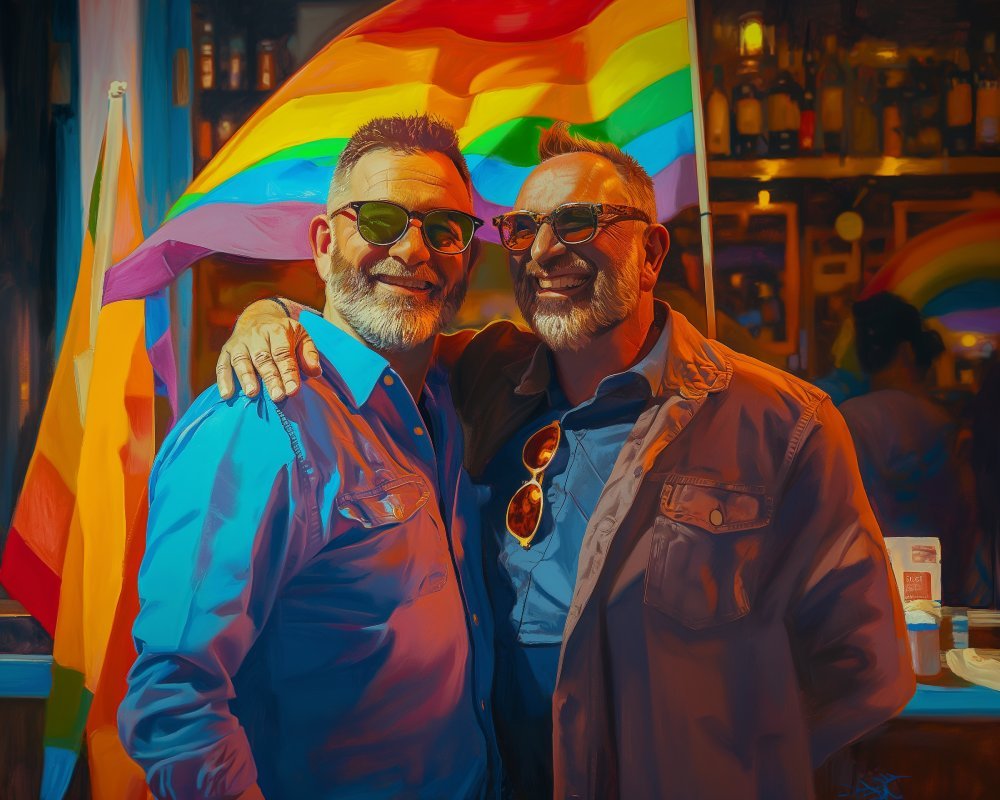
20. Opinion: It’s Not Easy Being Gay—But Progress and Hope Remain
We’ve journeyed through the layers of gay life—the history, struggles, joys, cultural shifts, and personal paths. So what’s the overarching conclusion? Indeed, It’s Not Easy Being Gay, even amidst modern improvements. Yet the conversation cannot stop there. Enormous strides in legal recognition, public support, and personal empowerment signal a forward trajectory.
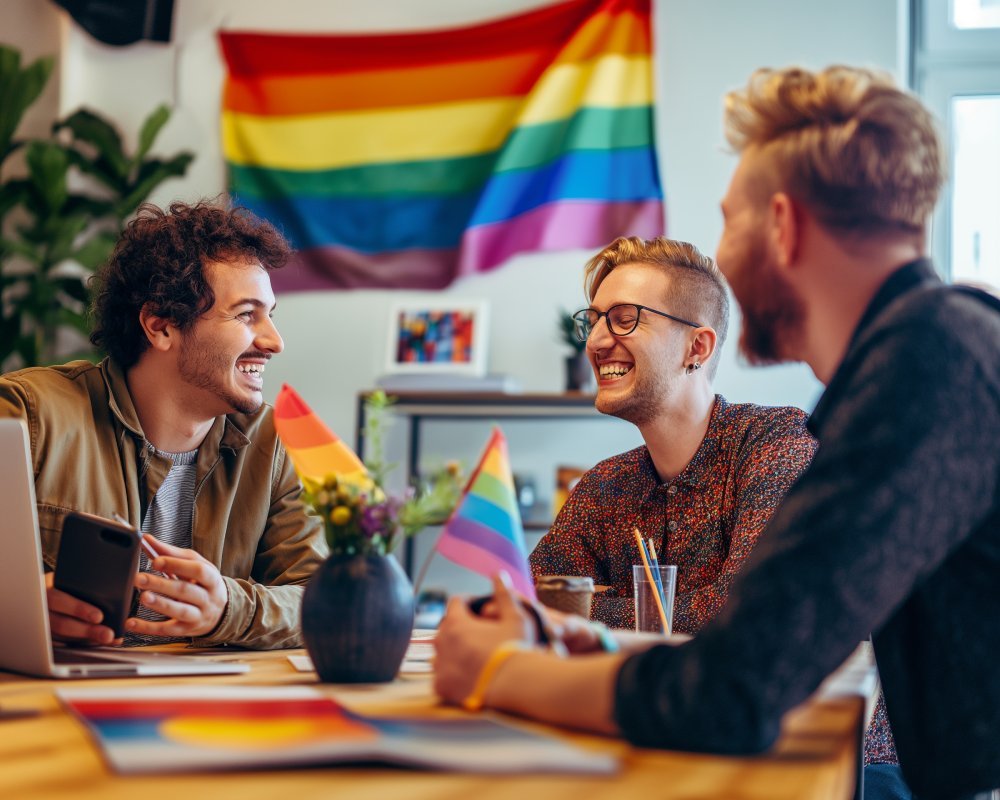
20.1. The Arc of Progress
From Stonewall to marriage equality, from closeted bars to public Pride festivals, gay communities have seen extraordinary transformation. Homophobic laws, once universal, are steadily dismantled. In media, out performers claim top charts; in sports, out athletes win championships. This momentum fosters optimism.
20.2. Remaining Battles
As positivity swells, challenges remain entrenched. Religious extremism, cultural conservatism, political opportunism, and institutional biases hamper genuine equality. Trans individuals, in particular, face relentless attacks. Racial inequalities within queer spaces remain unresolved. And in many parts of the world, being openly gay is unthinkable.
20.3. Personal Responsibility and Collective Solidarity
Each individual can make a difference—by supporting local LGBTQ businesses, voting for inclusive policies, championing anti-bullying efforts, or becoming a mentor to questioning youth. Allies also hold sway, shaping public discourse. Larger organizations must continue pressuring governments to respect universal human rights.
20.4. Embracing Complexity
Even at its best, the “gay life” concept is layered. Some enjoy exuberant city living, while others lead quiet, deeply private existences. Some are radicals changing laws; others just want to love in peace. Embracing this diversity counters the myth of a monolithic “lifestyle.” Instead, it acknowledges varied experiences shaped by age, culture, race, religion, and personal preference.
20.5. An Encouraging Future
Younger generations often report greater tolerance, in part due to open LGBTQ representation in media, more inclusive school curricula, and shifting familial attitudes. Technology breaks down isolation, linking gay teens in conservative towns to global networks. Many expect that acceptance will keep growing, though progress might be uneven.
Grand Takeaway: It’s not easy being gay—discrimination, stigma, and complex internal journeys remain daily realities. Yet, the broader arc points to undeniable progress. Legal gains, cultural visibility, and robust communities convey hope. Individuals can find deep meaning in forging chosen families, celebrating Pride, or living openly. Despite adversity, or perhaps because of it, a spirit of resilience and unity emerges, showcasing the best of human determination.
21. Conclusion – Gay Lifestyle: What Is Gay Life Like?
After exploring myriad angles—historical struggles, sexual orientation basics, coming-of-age experiences, family acceptance, cultural enclaves, intersectionality, mental health, activism, and more—it’s evident that gay life defies simplistic portrayals. The question, “What Is Gay Life Like?” yields no uniform answer. Instead, it unfolds as a mosaic of resilience, creativity, challenges, and triumphs.
- Historically, gay individuals fought legal oppression, overcame social stigma, and gradually reshaped norms.
- Socially, many face ongoing prejudice, yet others enjoy unprecedented acceptance, forging vibrant communities and chosen families.
- Culturally, LGBTQ influences saturate media, arts, and public discourse, though stereotypes persist.
- Personally, being gay can provide profound fulfillment—authentic love, strong networks, and a sense of shared community—while also entailing potential heartbreak, discrimination, or familial conflict.
- Globally, experiences vary dramatically, from countries with robust protections to places where same-sex relations remain criminalized.
How to Be Happy as a Gay Man or as any LGBTQ individual requires a blend of self-acceptance, supportive networks, mental health care, and activism. Embracing authenticity leads to inner peace, while acknowledging intersectionality fosters empathy. Celebrating Pride is both a joyful commemoration and a reminder that rights, once attained, must be safeguarded.
Ultimately, the “gay lifestyle” is a misnomer—there’s no singular lifestyle, but rather an array of lives shaped by orientation, culture, personal taste, and socio-political contexts. Yet within this tapestry are shared histories and common struggles. By uniting in solidarity, championing equality, and uplifting each other’s stories, the LGBTQ community continues to transform hearts, laws, and societies worldwide—ensuring that despite difficulties, what’s good about being gay shines through, validating every facet of this vibrant, evolving identity.
Advertisement · Scroll to continue

More Recommended
Pride and Profit: How Target is Navigating the Business of Marketing to the LGBTQ+ Community
Pride and Profit: How Target is Navigating the Business of Marketing to the LGBTQ+ Community [...]
Is “Homie” a Hidden Term for Being Gay?
Is “Homie” a Hidden Term for Being Gay? A Long, Informative Exploration of Covert Intimacy [...]
Empowering Brands and Consumers: The Mission of a Lesbian-Led Marketing Agency
Empowering Brands and Consumers: The Mission of a Lesbian-Led Marketing Agency Gay Thrive LGBTQ+ Marketing [...]
How Do You Support a Friend Who Just Came Out as Gay?
How Do You Support a Friend Who Just Came Out as Gay? – Navigating the [...]
Why Are Gay Pride Parades Celebrated Worldwide?
Why Are Gay Pride Parades Celebrated Worldwide? – Pride parades are a universal celebration of [...]
Can Lesbian Cruises Help You Disconnect and Reconnect?
Can Lesbian Cruises Help You Disconnect and Reconnect? If you are a member of the [...]
99 Funny Gay Jokes
99 Funny Gay Jokes – Laughter is a universal language, and humor is one of [...]
The Power of Inclusivity: How Target is Embracing its Gay Audience with Purposeful Marketing
The Power of Inclusivity: How Target is Embracing its Gay Audience with Purposeful Marketing – [...]
What is the symbol for pride support?
What is the symbol for pride support? – What is the symbol for pride support? [...]